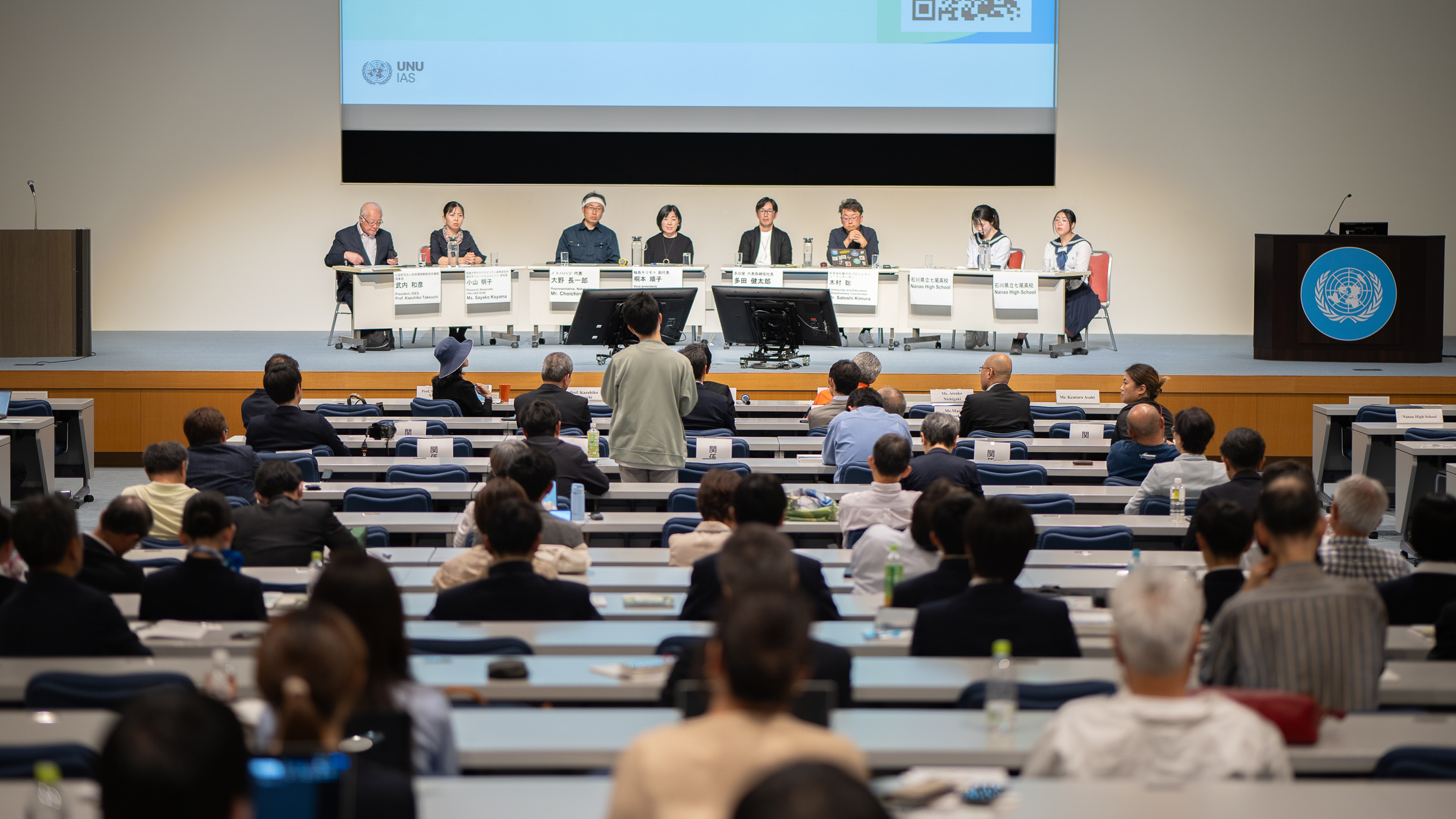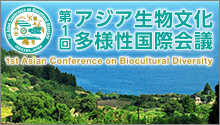On May 11, 2024, the Symposium on Supporting the Recovery of Noto Peninsula – Building Back Better was held at the U Thant International Conference Hall at the UNU HQ Building. The symposium was co-hosted by the United Nations University Institute for the Advanced Study of Sustainability (UNU-IAS), the Ministry of the Environment Japan (MOEJ), Ishikawa Prefecture, the Institute for Global Environmental Strategies (IGES), the Global Environment Outreach Centre (GEOC), and the Japan Foundation for the United Nations University (JFUNU). It was supported by the Keidanren Committee on Nature Conservation, the Japan Global Biodiversity Framework, the AEON Environmental Foundation, and the Environment Research and Technology Development Fund S21, with cooperation from Springer Nature.
The symposium began with opening remarks by Tshilidzi Marwala (Rector, United Nations University), Kentaro Asahi (Parliamentary Vice-Minister of the Environment, Japan), and Atsuko Nishigaki (Vice Governor, Ishikawa Prefecture). Then, to share the current situation and challenges of the disaster and efforts for recovery and reconstruction, Masuhiro Izumiya (Mayor, Suzu City) and Jin Sato (Mayor, Minamisanriku Town) took the stage. Mayor Izumiya shared his vision for the recovery, including the utilization of the resources of Noto’s satoyama and satoumi, future community development incorporating the perspective of SDGs, and human resource development for the next generation. Mayor Sato introduced his efforts to restore the forestry and fishery industries as sustainable industries by utilizing international certification after the Great East Japan Earthquake in 2011.
Additionally, the government’s reconstruction support was introduced by Masahiro Hosokawa (Director Regional Policy Division, Ministry of the Environment, Japan), and Mr. Takuya Ishikawa (Senior Coordinator, Biodiversity Policy Division Nature Conservation Bureau, Ministry of the Environment, Japan), Mr. Hideki Kawashima, (Director, Disaster Management Office, Regional Liaison Division, Minister’s Secretariat, Ministry of Agriculture, Forestry and Fisheries) and Mr. Masaru Goto, (Director, Disaster Prevention and Technical Affairs Division, Department of Facilities Planning and Disaster Prevention, Ministry of Education, Culture, Sports, Science and Technology).
David Cooper (Acting Executive Secretary of the Secretariat of the Convention on Biological Diversity) also gave a video message to the audience, stating that Noto’s recovery efforts to rebuild resilient and sustainable communities will also contribute to solving issues faced by the international community.
In the latter half of the session, Kazuhiko Takeuchi (President, IGES) moderated a panel discussion on the theme of ” Building Back Better with a Focus on Noto’s Unique Character ” Panelists included Sayako Koyama (Research Associate, UNU-IAS OUIK), Chojiro Ono (Representative of Notohahaso. Co., Ltd), Junko Kirimoto (Vice- President Wajima Kirimoto), Kentaro Tada (President and Representative Director of Wakura Onsen Tadaya), Satoshi Kimura (Community and Education Attractiveness Coordinator of the Noto High School Attractiveness Project), Seina Hirosawa (Nanao High School student) and Junka Kumura (Nanao High School student), and Nobuhiro Kido (Management Committee Member of Nanaka Branch of Ishikawa Prefecture Fisheries Cooperative), (via video message). They introduced their experiences from their respective positions, the situation after the disaster, and their activities for future reconstruction. It was discussed that crosscutting collaboration across generations and sectors, as well as cooperation among regions, is essential in the recovery. It was confirmed that it is important to first create an exciting reconstruction plan together with the young people who will bear the future of Noto Region.
Tsunao Watanabe (Director, UNU-IAS OUIK) gave a summary of the symposium, and Shinobu Yamaguchi (Director, United Nations University Institute for the Advanced Study of Sustainability) closed the symposium with remarks.
The symposium provided an important opportunity to share diverse perspectives and concrete action plans for recovery from the disaster and to deepen cooperation between local and international communities.
For more information, please watch the following video (recording of the symposium).




